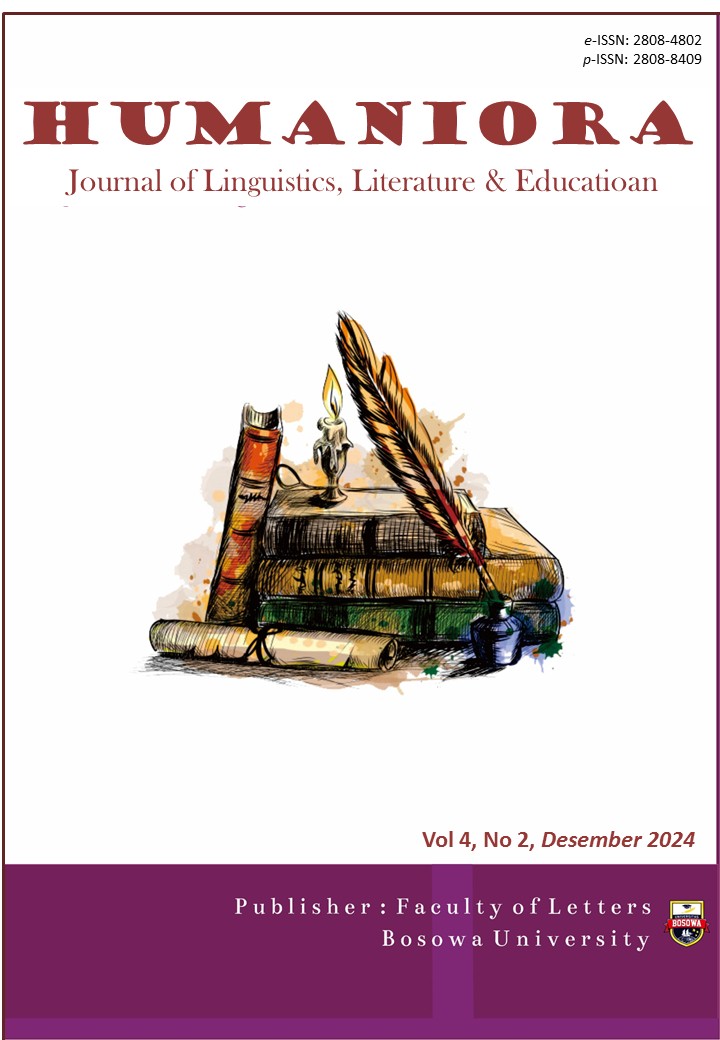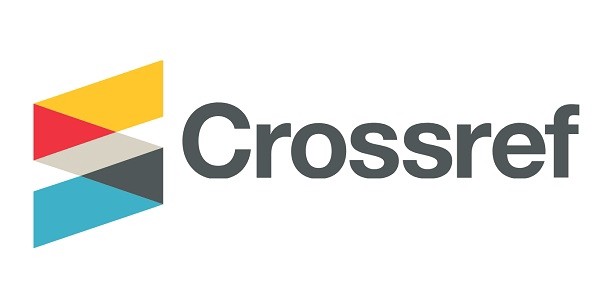Conflict In James Marsh’s Movie: Theory Of Everything Movie Script
DOI:
https://doi.org/10.56326/jlle.v4i2.4680Keywords:
Conflict, Factors, Movie Scripts, Ursula LerhAbstract
The research aims are to identify the types of conflict and factors that exists in the Anthony McCarten’s movie script “Theory of Everything”. The writer used the conflict theory of Ursula Lehr to find out the conflicts and factors that exists in the movie script. The primary data is from the movie script written by Anthony McCarten which directed by James Marsh. The writer used the descriptive qualitative method in presenting this research. The results of the research, the writer found there were 6 types of conflict found in The Theory of Everything, they were conflicts in religions, personal conflict, conflict with other people, conflict with husband/wife, conflict with relatives and conflict with parents. The factors of conflicts are personal needs and goals, beliefs and values, disability and physical health, family dynamics, communication, emotional factors. In the end, the movie honors how resilient the human spirit can be when faced with hardship. It shows how people like Stephen Hawking overcome great obstacles with bravery, tenacity, and unwavering devotion to their own convictions and goals. Through this research, the writer wishes that the readers can understand the application of the Conflict theory by Ursula Lehr in finding the conflict.
References
Adeani, I. S., Febriani, R. B., & Syafryadin, S. (2020). Using GIBBS’ reflective cycle in making reflections of literary analysis. Indonesian EFL Journal,6(2), 139- 148.doi:10.25134/ieflj.v6i2.3382.
Atkinson, W. (2016). The Structure of Literary Taste: Class, Gender and Reading in the UK. Cultural Sociology, 10 (2), 247-266.https://doi.org/10.1177/1749975516639083
Cour, T., et al. (2008). Movie/Script: Alignment and Parsing of Video and Text Transcription. European Conference on Computer Vision. DOI:10.1007/978-3-540-88693-8_12
Daulay, M. I., & Hidayati, H. (2022, December 14). The PersonalityoftheProtagonist in Sean Penn Movie Script’sIntotheWild.Vernacular: Linguistics, Literature, CommunicationandCultureJournal,2(2), 137-143. https://doi.org/https://doi.org/10.35447/vernacular.v2i2.574
Dejowati, C. (2010). Drama: sejarah, teori, dan penerapannya. Yogjakarta: Gadjah Mada University Press.
Dina, T. M., & Suhendi, A. (2019). Family Conflict in E. Lockhart’s Novel We Were Liars. Journal of Language, 1(2), 89-100. DOI: 10.30743.jol.v1i2.2457
Effendy, O. Uchjana. (1986). Dimensi-Dimensi Komunikasi. Bandung: Rosda Karya.
Endraswara, S. (2003). Metodologi Penelitian Sastra. Yogyakarta: Pustaka Widyatama Harolds, J., & Wood, B. P. (2006). Conflict Management and Resolution. Journal of the American College of Radiology, 3(3), 200-206. doi:10.1016/j.jacr.2005.10.005
Haruna, K., et al. (2019). A Soft Set Approach for Handling Conflict Situation on Movie Selection. IEEE Access, 7, 116179–116194. https://doi.org/10.1109/ACCESS.2019.2892778
Inzunza, M., & Carlsson, N. (2021). Crime Prevention in Colombia: A Pilot Study. International Journal of Comparative and Applied Criminal Justice. Doi: 10.1080/01924036.2021.1992640.
Khatun, M. (2022). Crime and Crime Prevention Strategies: A Descriptive Analysis of Trends, Patterns, and Feasibility of Community Policing in Bangladesh. American Research Journals. 8 (1). Pp, 40-43. DOI: 10.21694/2378-7031.22005.
Klarer, Mario. 2004. An Intriduction to Literary Studies (2nd ed). Darmstad. Wissenschaftliche Buchgesellschaft.
Maresty, D. T., Armariena, D. N., & Wandiyo, W. (2022). Perilaku Depresi Tokoh Amanda Dalam Novel a Untuk Amanda KaryaAnnisaIhsani: Kajian Psikologi Sastra. Sastranesia: Jurnal Program Studi Pendidikan Bahasa Dan Sastra Indonesia, 10(3). https://doi.org/10.32682/sastranesia.v10i3.2596
Margiana, R., Kuncara, S. D., & Lubis, I. S. (2020). The Depression Symptoms of Virgiana Woolf asThe Author Portrayed in Mrs Dalloway Novel. Jurnal Bahasa, Sastra, Seni, Dan Budaya, 4(4), 594–613.
Naim, I., et al. (2016). Aligning movies with scripts by exploiting temporal ordering constraints.International Conference on Pattern Recognition (ICPR), (pp. 1786-1791). Cancun, Mexico. doi: 10.1109/ICPR.2016.7899895
Ni'matunnisa, J., & Nugroho, A. (2021). Family Conflict in Eat, Pray, Love Movie: A Sociological Approach. Thesis. Surakarta: Universitas Muhammadiyah Surakarta.
NG, K. L., Buvanaswari, P., Loh, L. W. L., Chee, C. Y. I., Teng, J. Y., Wang, W., & He, H.G. (2021). A descriptive qualitative study exploring the experiences of fathers with partners suffering from maternal perinatal depression: Fathers with partners suffering from PND. Midwifery, 102. https://doi.org/10.1016/j.midw.2021.103075
Nurfajriani, N., Maca, S, & Abeng, A. T. (2021). Auggie’sMotivationFacingDiscrimination in Wonder Novel By R.J Palacio.Humaniora: JournalofLinguistics, Literature, andEducation,1(2), 124–133. https://doi.org/10.56326/jlle.v1i2.1349
Rapa, I. T., Moelier, D. D., & Asyrafunnisa, A. (2022). The Personality of Tifani Fanelli in Jessica Knoll’s Novel Luckiest Girl Alive.Humaniora: Journal of Linguistics, Literature, and Education,2(1), 28–37. https://doi.org/10.56326/jlle.v2i1.1447
Robbins, Stephen P.,& Judge, Timothy A. (2018). Essentials of Organizational Behavior (14th ed.). England: Pearson.
Sahadun, F. C. D., Moelier, D. D., & Asyrafunnisa, A. (2022). Family Conflict in Edward Albee’s Selected Dramas. Humaniora: Journal of Linguistics, Literature, and Education, 2(2), 116–126. https://doi.org/10.56326/jlle.v2i2.2115
Setyawan, N.A. (2020). Indonesian National Police’s Anti-Corruption Function and Economic Development. Asia Pacific Fraud Journal. 5 (2). Pp, 201-211. Doi: 10.21532/apfjournal.v5i2.158.
Siavashi, S. (2023). Psychological Criticism of Saeed Mehran’s Character in Al-Las va Al- Klab according to Alfred Adler’s Theory. Journalof The Journalof New CriticalArabicLiterature. doi: 10.22034/mcal.2023.19353.2290
Sholihah, F. (2021). An Analysis Of Plot In Film The Theory Of Everything By James Marsh. 8(1).
Sumardjo, Jakob dan Saini. (1997). Apresiasi Kesusastraan. Jakarta: Gramedia Pustaka Utama.
Sutrisno, B., Purnama, R. E., & Rachmawati, B. (2022). An Analysis Of Social Conflict In The Movie “Bohemian Rhapsody”. Journal of English Language and Literature (JELL),7(2), 171–184. https://doi.org/10.37110/jell.v7i2.155
Wellek, R., & Warren, A. (1956). Theory of literature. New York: Harcourt, Brace & World. Wijaya, Kadek Adi Eka&Ayu, G. Sosiowati. (2023). Conflicts in Characters’ Movie of San
Andreas. HUMANIS Journal of Arts and Humanities.2(27), 24–30.
Wrahatnala, Bondet. (2009). Sosiologi 2 : untuk SMA dan MA Kelas XI. Jakarta: Pusat Perbukuan, Departemen Pendidikan Nasional
Yusuf, Niken, Delli Sabudu, & Merlin M. Maukar. (2024). Linguistics, and Literature published by English Education Study Program, Faculty of Languages and Arts. In JoTELL Journal of Teaching English(3)2.
Zaky. (2020). Hubungan sastra dan Film.
Downloads
Published
How to Cite
Issue
Section
License
Copyright (c) 2024 Engelbert Aldo Saputra Gorang, Dahlia D. Moelier, Tabhan Syamsu Rijal

This work is licensed under a Creative Commons Attribution 4.0 International License.










